ASUS ROG Strix G15 G513 review – a possible best seller for 2021
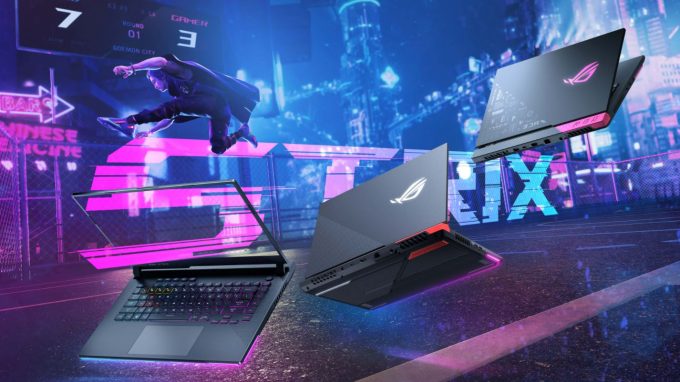 Although it launched side by side with its 17-inch sibling, we were able to snatch a ROG Strix G15 G513 just now. And to be honest, it doesn’t feel a whole lot different. In fact, it is a smaller version of the same laptop and packs pretty much the same features.
Although it launched side by side with its 17-inch sibling, we were able to snatch a ROG Strix G15 G513 just now. And to be honest, it doesn’t feel a whole lot different. In fact, it is a smaller version of the same laptop and packs pretty much the same features.
This includes AMD’s latest and greatest from the processor world, with the Zen 3 chips proving to be absolute units when it comes to sheer power. Also, there are some very capable variants of the RTX 3000 graphics cards, such as the 130W version of the RTX 3070, which we have on our unit.
You see, this is not even the most groundbreaking thing about the Strix G15 of 2021. To see that, we have to look at the displays. There, you can find 144Hz and 300Hz Full HD options. However, the pinnacle of future laptop gaming is the 1440p 165Hz panel, which falls right in the sweet spot for mobile computing.
You can check the prices and configurations in our Specs System: https://laptopmedia.com/series/asus-rog-strix-g15-g513/
Contents
Specs Sheet
- HDD/SSD
- up to 2000GB SSD
- M.2 Slot
- 2x 2280 M.2 NVMe slots See photo
- RAM
- up to 64GB
- OS
- Windows 10 Home, Windows 11 Home, Windows 11 Pro, Windows 10 Pro
- Battery
- 90Wh, 4-cell, 90Wh, 4-cell
- Body material
- Plastic / Polycarbonate, Aluminum
- Dimensions
- 354.9 x 259.9 x 22.9 ~ 27.2 mm (13.97" x 10.23" x 0.90")
- Weight
- 2.30 kg (5.1 lbs)
- Ports and connectivity
- 3x USB Type-A
- 3.2 Gen 1 (5 Gbps)
- 1x USB Type-C
- 3.2 Gen 2 (10 Gbps), Power Delivery (PD), DisplayPort
- HDMI
- 2.0b
- Card reader
- Ethernet LAN
- 10, 100, 1000 Mbit/s
- Wi-Fi
- 802.11ax
- Bluetooth
- 5.1
- Audio jack
- 3.5mm Combo Jack
- Features
- Fingerprint reader
- Web camera
- Backlit keyboard
- Microphone
- Array Microphone
- Speakers
- 2x 4W, Smart Amp
- Optical drive
- Security Lock slot
All ASUS ROG Strix G15 (G513) configurations
What’s in the box?
Inside the package, you will see the mandatory paperwork and a 240W power adapter.
Design and construction
As we said, here we have a smaller version of the ROG Strix G17 G713. It has an aluminum lid, and plastic base, but interestingly, the chassis strength is on point. It measures 22.6-27.2mm in thickness and 2.30 kg in weight. This leaves it in the spectrum of the average gaming laptop in terms of dimensions. By the way, the smooth texture on the base feels pretty good.
While the lid opens with a single hand, we find it weak and flexy. Once again, we see the same thing – very thin bezels on the top and the sides of the matte display, and a larger, cut bottom bezel. And sadly – no camera to play with.
If you look at the keyboard, you will see pretty much the same unit as on the ROG Strix G17 G713, minus the NumberPad. In its place, there is a set of multimedia keys. Speaking of additional buttons, there are five keys above the keyboard. They control the sound volume, turn on/off the microphone, toggle between performance presets, and open the Armoury Crate.
As for the keyboard, itself, it is has a per-key RGB backlight (or 4-zone RGB on some units), relatively good key travel, and clicky feedback. It would have been great if it wasn’t for the extremely small Arrow keys.
However, the touchpad seems extremely big for a gaming laptop. Not only does its size make it comfortable, but also the smooth gliding and easy-to-click mechanism. It also registers clicks in about 95% of its area.
On the bottom panel, you will see the speaker grills for the two 4W units, as well as the vents for the cool air intake. Hot air, on the other hand, is exhausted from two grills on the back, and one on each side of the device.
Ports
The I/O here is located on the back, and on the left side. While on the left, there are only two USB Type-A 3.2 (Gen. 1) ports and an Audio jack, the back houses the power plug, RJ-45 connector, HDMI 2.0b connector, a USB Type-C 3.2 (Gen. 2) port with DisplayPort output, and Power Delivery functions, as well as another USB Type-A 3.2 (Gen. 1) port. By the way, if you look at the back of the laptop, you will see that one of the grills has something that looks like letters. In fact, it reads MMVI, which converted from Roman numerals, means 2006 – the year the ROG brand was created. Nice touch, ASUS.
Disassembly, upgrade options, and maintenance
In order to take this device’s bottom panel off, you need to undo 11 Phillips-head screws. After that carefully pry your way around the panel, and gently lift it. Don’t be too hasty, though, because you need to unclip the LED strip ribbon cables.
Looking at the cooling setup, we see a total of six heat pipes. One common for the CPU and the GPU, two more for each of them, and one dedicated to the VRMs and the graphics memory. All of them go to four heat spreaders.
Thankfully, the upgradability is on point here, with two RAM SODIMM slots, which support up to 64GB of DDR4 memory in dual-channel. Also, you get two M.2 NVMe slots for storage.
When it comes to the battery, ASUS has made sure you get the same 90Wh package, they put in the larger 17-inch model.
Display quality
ASUS ROG Strix G15 G513 in the configuration we tested has a 300 Hz Full HD panel – Sharp LQ156M1JW25 (SHP152C). Its diagonal is 15.6″ (39.62 cm), and the resolution 1920 х 1080 pixels. The screen ratio is 16:9, and we are looking at a pixel density of – 142 ppi, and a pitch of 0.18 х 0.18 mm. The screen turns into Retina when viewed at distance equal to or greater than 60cm (24″) (from this distance one’s eye stops differentiating the separate pixels, and it is normal for looking at a laptop).
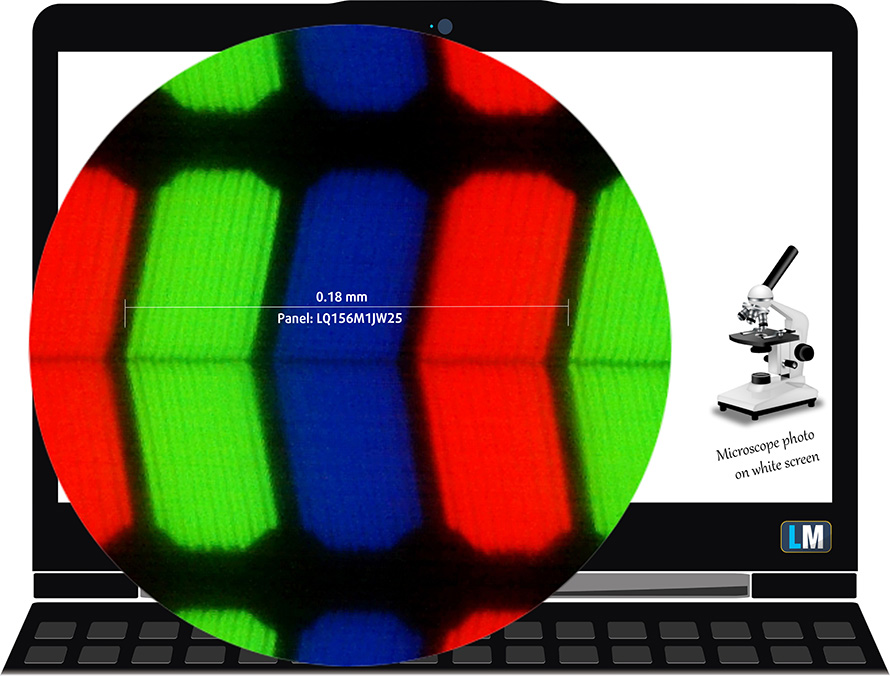
Viewing angles are excellent. We offer images at 45° to evaluate image quality.

We measured a maximum brightness of 290 nits in the middle of the screen and 277 nits as an average for the whole area, with a maximum deviation of 14%. The Correlated Color Temperature on a white screen is 6400K – slightly warmer than the optimal for the sRGB standard of 6500K.
In the illustration below you can see how the main display performs from a uniformity perspective. In other words, the leakage of light from the light source.
Values of dE2000 over 4.0 should not occur, and this parameter is one of the first you should check if you intend to use the laptop for color-sensitive work. The contrast ratio is good – 1080:1.
To make sure we are on the same page, we would like to give you a little introduction to the sRGB color gamut and the Adobe RGB. To start, there’s the CIE 1976 Uniform Chromaticity Diagram that represents the visible specter of colors by the human eye, giving you a better perception of the color gamut coverage and the color accuracy.
Inside the black triangle, you will see the standard color gamut (sRGB) that is being used by millions of people on HDTV and on the web. As for the Adobe RGB, this is used in professional cameras, monitors, etc for printing. Basically, colors inside the black triangle are used by everyone and this is the essential part of the color quality and color accuracy of a mainstream notebook.
Still, we’ve included other color spaces like the famous DCI-P3 standard used by movie studios, as well as the digital UHD Rec.2020 standard. Rec.2020, however, is still a thing of the future and it’s difficult for today’s displays to cover that well. We’ve also included the so-called Michael Pointer gamut, or Pointer’s gamut, which represents the colors that naturally occur around us every day.
The yellow dotted line shows ASUS ROG Strix G15 G513’s color gamut coverage.
Its display covers 98% of the sRGB/ITU-R BT.709 (web/HDTV standard) in CIE1976.
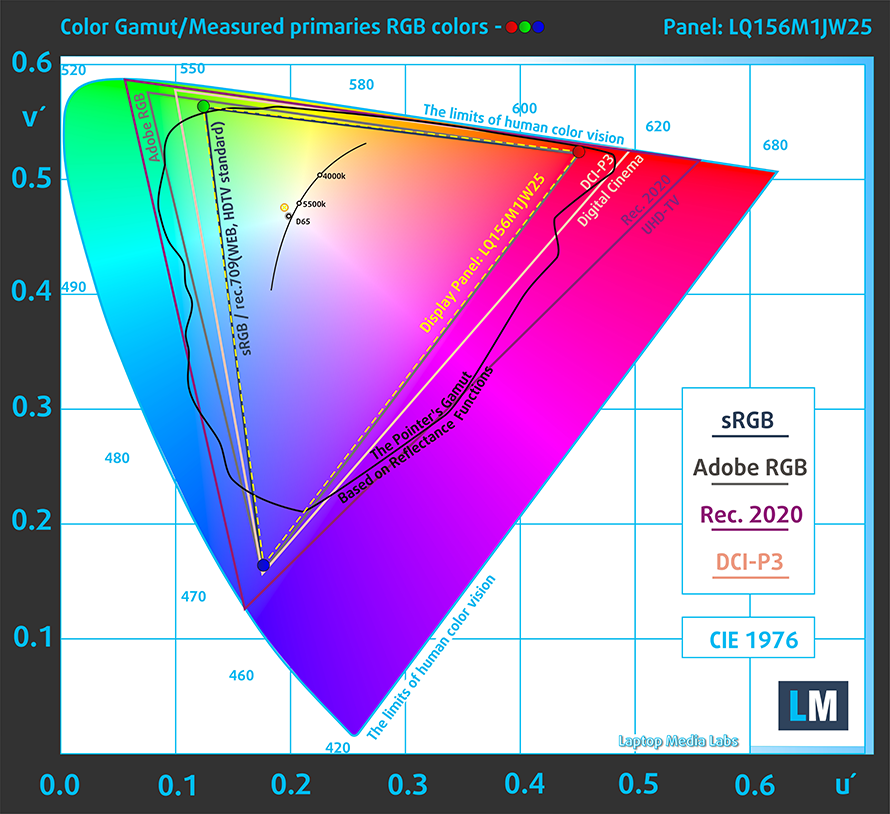
Our “Design and Gaming” profile delivers optimal color temperature (6500K) at 140 cd/m2 luminance and sRGB gamma mode.
We tested the accuracy of the display with 24 commonly used colors like light and dark human skin, blue sky, green grass, orange, etc. You can check out the results at factory condition and also, with the “Design and Gaming” profile.
Below you can compare the scores of ASUS ROG Strix G15 G513 with the default settings (left), and with the “Gaming and Web design” profile (right).
The next figure shows how well the display is able to reproduce really dark parts of an image, which is essential when watching movies or playing games in low ambient light.
The left side of the image represents the display with stock settings, while the right one is with the “Gaming and Web Design” profile activated. On the horizontal axis, you will find the grayscale, and on the vertical axis – the luminance of the display. On the two graphs below you can easily check for yourself how your display handles the darkest nuances but keep in mind that this also depends on the settings of your current display, the calibration, the viewing angle, and the surrounding light conditions.

Response time (Gaming capabilities)
We test the reaction time of the pixels with the usual “black-to-white” and “white-to-black” method from 10% to 90% and vice versa.
We recorded Fall Time + Rise Time = 9 ms.

After that, we test the reaction time of the pixels with the usual “Gray-to-Gray” method from 50% White to 80% White and vice versa between 10% and 90% of the amplitude.
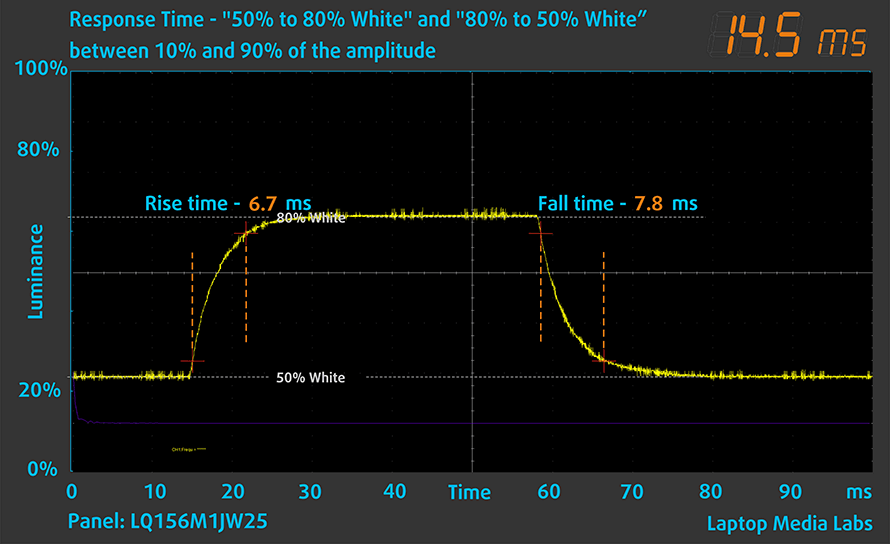
PWM (Screen flickering)
Pulse-width modulation (PWM) is an easy way to control monitor brightness. When you lower the brightness, the light intensity of the backlight is not lowered, but instead turned off and on by the electronics with a frequency indistinguishable to the human eye. In these light impulses, the light/no-light time ratio varies, while brightness remains unchanged, which is harmful to your eyes. You can read more about that in our dedicated article on PWM.
ASUS ROG Strix G15 G513 doesn’t use PWM to adjust its brightness at any point. This means it is comfortable for long gaming sessions without harming your eyes in this aspect.
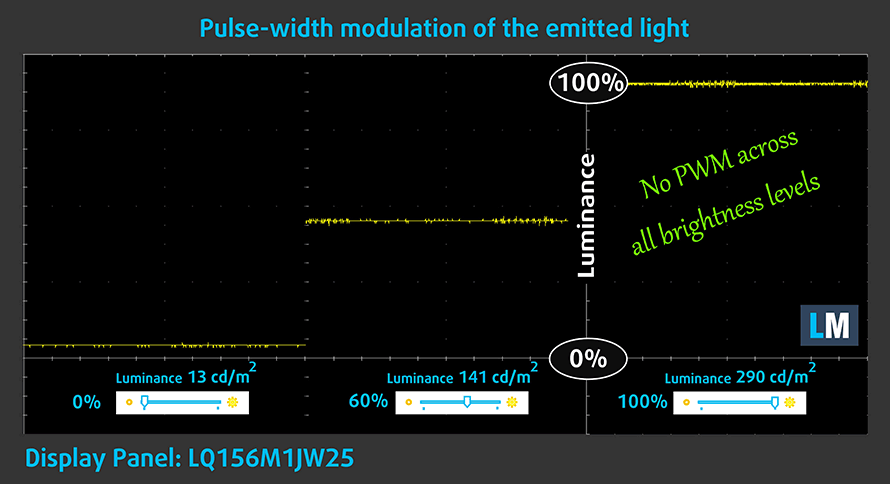
Blue light emissions
Installing our Health-Guard profile not only eliminates PWM but also reduces the harmful Blue Light emissions while keeping the colors of the screen perceptually accurate. If you’re not familiar with the Blue light, the TL;DR version is – emissions that negatively affect your eyes, skin, and your whole body. You can find more information about that in our dedicated article on Blue Light.
Conclusion
ASUS ROG Strix G15 G513’s 300Hz IPS panel has a Full HD resolution, good contrast ratio, and comfortable viewing angles. Moreover, it is able to display 98% of the colors found on the Web, and it doesn’t flicker at any brightness level. Here, the pixel response time is very fast, which is of utmost importance for gamers. Interestingly, you can use this laptop for creative work, as well, because our Gaming and Web design profile manages to get the color representation very accurate with an Average dE of 0.6. Unfortunately, the more pedantic users will find the nonuniform colors across the area of the display a bit unsettling.
Buy our profiles
Since our profiles are tailored for each individual display model, this article and its respective profile package are meant for ASUS ROG Strix G15 G513 configurations with 15.6″ FHD IPS Sharp LQ156M1JW25 (SHP152C).
*Should you have problems with downloading the purchased file, try using a different browser to open the link you’ll receive via e-mail. If the download target is a .php file instead of an archive, change the file extension to .zip or contact us at [email protected].
Read more about the profiles HERE.
In addition to receiving efficient and health-friendly profiles, by buying LaptopMedia's products you also support the development of our labs, where we test devices in order to produce the most objective reviews possible.

Office Work
Office Work should be used mostly by users who spend most of the time looking at pieces of text, tables or just surfing. This profile aims to deliver better distinctness and clarity by keeping a flat gamma curve (2.20), native color temperature and perceptually accurate colors.

Design and Gaming
This profile is aimed at designers who work with colors professionally, and for games and movies as well. Design and Gaming takes display panels to their limits, making them as accurate as possible in the sRGB IEC61966-2-1 standard for Web and HDTV, at white point D65.

Health-Guard
Health-Guard eliminates the harmful Pulse-Width Modulation (PWM) and reduces the negative Blue Light which affects our eyes and body. Since it’s custom tailored for every panel, it manages to keep the colors perceptually accurate. Health-Guard simulates paper so the pressure on the eyes is greatly reduced.
Get all 3 profiles with 33% discount
Sound
ASUS ROG Strix G15 G513’s Dolby Atmos speakers produce a deep sound with good quality. Its low, mid, and high tones are clear of deviations.
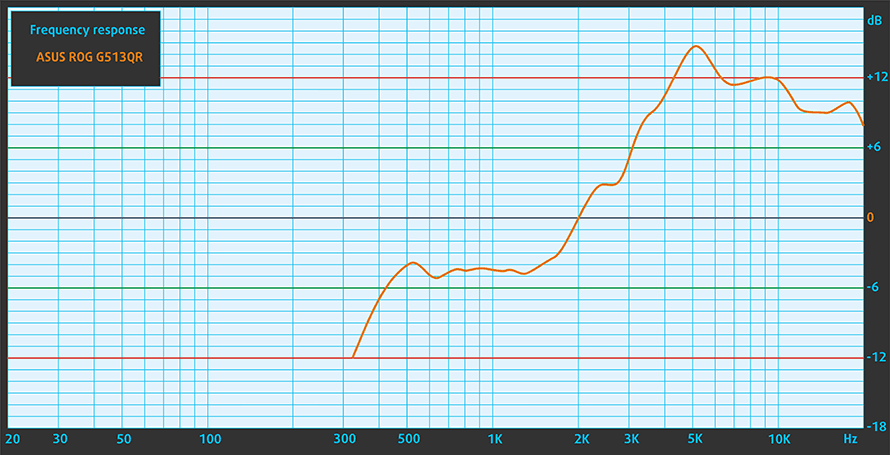
Drivers
All of the drivers and utilities for this notebook can be found here: https://rog.asus.com/us/laptops/rog-strix/2021-rog-strix-g15-series/helpdesk_download
Battery
Now, we conduct the battery tests with Windows Better performance setting turned on, screen brightness adjusted to 120 nits, and all other programs turned off except for the one we are testing the notebook with. This device’s 90Wh battery pack lasts for 11 hours and a half of Web browsing and 9 hours and 15 minutes of video playback.
In order to simulate real-life conditions, we used our own script for automatic web browsing through over 70 websites.
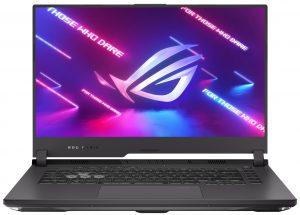
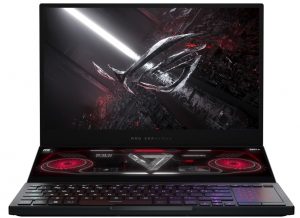
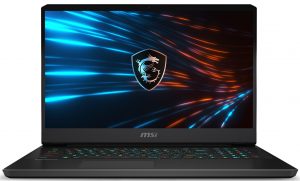
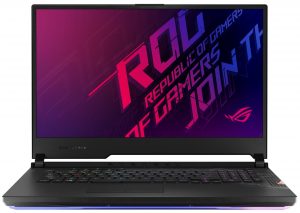
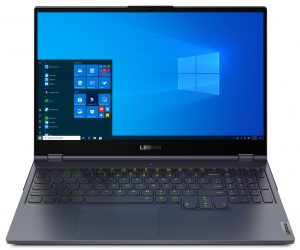
For every test like this, we use the same video in HD.





CPU options
Currently, we are able to find versions of this notebook, equipped with the AMD Ryzen 7 5800H, and the Ryzen 9 5900HX.
Results are from the Cinebench R23 CPU test (the higher the score, the better)
Results are from our Photoshop benchmark test (the lower the score, the better)
ASUS ROG Strix G15 (G513) CPU variants
Here you can see an approximate comparison between the CPUs that can be found in the ASUS ROG Strix G15 (G513) models on the market. This way you can decide for yourself which ASUS ROG Strix G15 (G513) model is the best bang for your buck.
Note: The chart shows the cheapest different CPU configurations so you should check what the other specifications of these laptops are by clicking on the laptop’s name / CPU.
Results are from the Cinebench 20 CPU test (the higher the score, the better)
Results are from our Photoshop benchmark test (the lower the score, the better)
GPU options
And on the graphics front, we see the RTX 3060, and the RTX 3070.
Results are from the 3DMark: Time Spy (Graphics) benchmark (higher the score, the better)
Results are from the 3DMark: Fire Strike (Graphics) benchmark (higher the score, the better)
Results are from the Unigine Superposition benchmark (higher the score, the better)
ASUS ROG Strix G15 (G513) GPU variants
Here you can see an approximate comparison between the GPUs that can be found in the ASUS ROG Strix G15 (G513) models on the market. This way you can decide for yourself which ASUS ROG Strix G15 (G513) model is the best bang for your buck.
Note: The chart shows the cheapest different GPU configurations so you should check what the other specifications of these laptops are by clicking on the laptop’s name / GPU.
Results are from the 3DMark: Time Spy (Graphics) benchmark (higher the score, the better)
Results are from the 3DMark: Fire Strike (Graphics) benchmark (higher the score, the better)
Results are from the 3DMark: Wild Life (Graphics) benchmark (higher the score, the better)
Results are from the Unigine Superposition benchmark (higher the score, the better)
Gaming tests

| Far Cry 5 | Full HD, Normal (Check settings) | Full HD, High (Check settings) | Full HD, Ultra (Check settings) |
|---|---|---|---|
| Average | 104 fps | 100 fps | 94 fps |

| Rise of the Tomb Raider (2016) | Full HD, Medium (Check settings) | Full HD, Very High (Check settings) | Full HD, MAX (Check settings) |
|---|---|---|---|
| Average | 128 fps | 103 fps | 77 fps |

| Tom Clancy’s Ghost Recon Wildlands | Full HD, High (Check settings) | Full HD, Very High (Check settings) | Full HD, Ultra (Check settings) |
|---|---|---|---|
| Average | 99 fps | 89 fps | 65 fps |

| Shadow of the Tomb Raider (2018) | Full HD, Medium (Check settings) | Full HD, High (Check settings) | Full HD, Highest (Check settings) |
|---|---|---|---|
| Average | 100 fps | 99 fps | 86 fps |
Temperatures and comfort
Max CPU load
In this test we use 100% on the CPU cores, monitoring their frequencies and chip temperature. The first column shows a computer’s reaction to a short load (2-10 seconds), the second column simulates a serious task (between 15 and 30 seconds), and the third column is a good indicator of how good the laptop is for long loads such as video rendering.
Average core frequency (base frequency + X); CPU temp.
| AMD Ryzen 7 5800H (45W TDP) | 0:02 – 0:10 sec | 0:15 – 0:30 sec | 10:00 – 15:00 min |
|---|---|---|---|
| ASUS ROG Strix G15 G513 | 3.44 GHz (B+8%) @ 68°C | 3.37 GHz (B+5%) @ 72°C | 3.44 GHz (B+8%) @ 74°C |
| ASUS ROG Zephyrus Duo 15 SE (GX551) | 3.93 GHz (B+23%) @ 81°C | 3.82 GHz (B+19%) @ 86°C | 3.78 GHz (B+18%) @ 93°C |
| ASUS TUF A17 (FA706) 2021 | 3.42 GHz (B+7%) @ 74°C | 3.34 GHz (B+4%) @ 78°C | 3.35 GHz (B+5%) @ 84°C |
Here, we see a very good job from the cooling and the liquid metal thermal compound. Even under an extreme workload, the temperature never exceeds 74°C.
Real-life gaming
| NVIDIA GeForce RTX 3070 | GPU frequency/ Core temp (after 2 min) | GPU frequency/ Core temp (after 30 min) |
|---|---|---|
| ASUS ROG Strix G15 G513 | 1632 MHz @ 84°C @ 130W | 1617 MHz @ 86°C @ 128W |
| ASUS ROG Zephyrus Duo 15 SE (GX551) | 1689 MHz @ 71°C @ 131W | 1676 MHz @ 72°C @ 129W |
| ASUS ROG Strix G17 G713 | 1649 MHz @ 83°C @ 130W | 1646 MHz @ 84°C @ 130W |
| ASUS TUF A17 (FA706) 2021 | 1440 MHz @ 74°C @ 95W | 1465 MHz @ 77°C @ 95W |
| ASUS TUF Dash F15 (FX516) | 1389 MHz @ 69°C @ 84W | 1377 MHz @ 74°C @ 84W |
Well, the GPU on the other side, runs at 86°C after 30 minutes of gaming, which is a bit high. Some undervolting might help.
Gaming comfort
While the laptop is a bit loud with the “Turbo” performance setup, the temperature on the outside is reasonably cool.
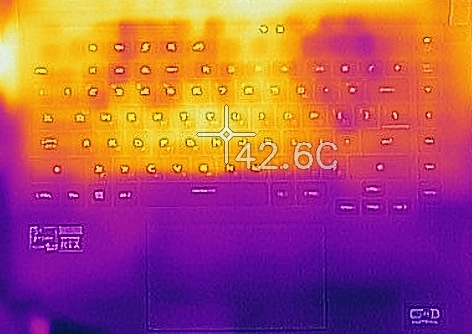
Verdict
Today, we had a laptop, dressed in RGB and seemingly unchanged from its predecessor on the outside. We find frustrating the fact that it lacks a Web camera in a world that has more conference calls than ever before. However, if we take this minor unsettling defect, the laptop does well at what it has to – gaming.
We are wondering, however, what would the temperatures be, if ASUS has used liquid metal for the GPU, as it does for the CPU. Would it drive the temperatures down? Most probably. Some day we might make an experiment and in-depth article, regarding that, but for now, the reality is this.
ASUS ROG Strix G15 G513’s 300Hz IPS panel (Sharp LQ156M1JW25 (SHP152C)) has a Full HD resolution, good contrast ratio, and comfortable viewing angles. Moreover, it is able to display 98% of the colors found on the Web, and it doesn’t flicker at any brightness level. Here, the pixel response time is very fast, which is of utmost importance for gamers. Interestingly, you can use this laptop for creative work, as well, because our Gaming and Web design profile manages to get the color representation very accurate with an Average dE of 0.6. Unfortunately, the more pedantic users will find the nonuniform colors across the area of the display a bit unsettling.
Also, we were pleasantly surprised by the battery life, as the 90Wh battery delivers 11 hours and a half of Web browsing, and 9 hours and 15 minutes of video playback. This couldn’t have been done, however, if it wasn’t for the variable refresh rate of the display, which automatically drops down from the 300Hz it usually works on.
Next, the upgradability. There are two RAM SODIMM slots, that work in dual-channel and support up to 64GB of DDR4 memory. Also, you get two M.2 NVMe slots for storage. Pretty much the holy grail for gaming laptops.
Now, the keyboard doesn’t feel particularly good for gaming, and this is mostly because of the small Arrow keys. Even the thin and light Lenovo Legion 7 (15) has a better unit for gaming.
Unfortunately, there is no SD card reader on board, nor you get Thunderbolt connectivity. Other than that, the I/O is okay.
Interestingly, the performance of this device was quite lower than that of the ROG Zephyrus Duo 15 SE (GX551) with its two screens. However, the ROG Strix G15 G513 is a far less expensive laptop, and we see it as a best seller in ASUS’ line up of today.
Pros
- Good performance from the CPU with a very low temperature under stress (thanks to the pre-applied liquid metal)
- There are two M.2 PCIe slots, two RAM SODIMM slots (up to 64GB of RAM in total) + it supports Wi-Fi 6
- Covers 98% of the sRGB color gamut and has accurate color representation with our Gaming and Web design profile (Sharp LQ156M1JW25)
- Snappy 300Hz panel with quick response times (Sharp LQ156M1JW25)
- PWM-free
- RGB all around the place
- Very good battery life
Cons
- Its GPU gets pretty toasty during gameplay
- Tiny Arrow keys
- No SD card slot and Thunderbolt support
You can check the prices and configurations in our Specs System: https://laptopmedia.com/series/asus-rog-strix-g15-g513/
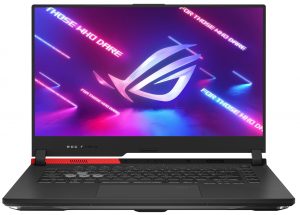
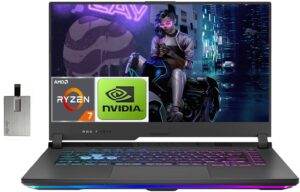


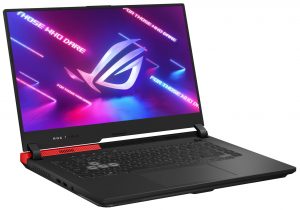
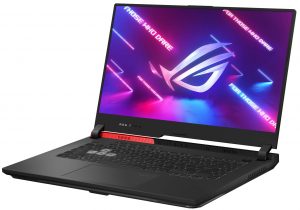
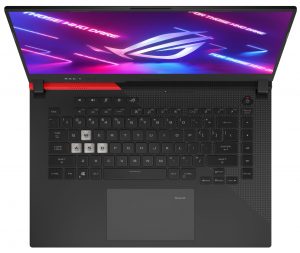
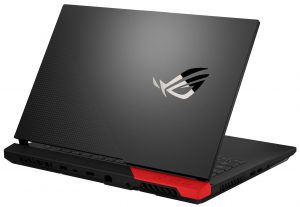
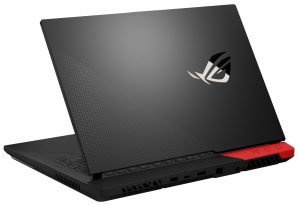

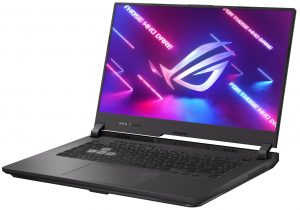
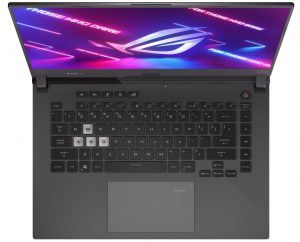
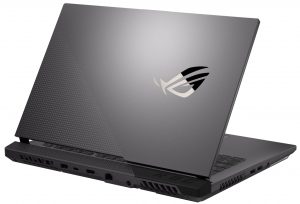
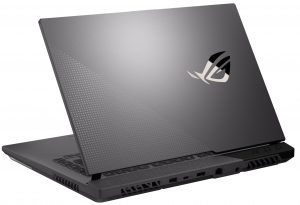
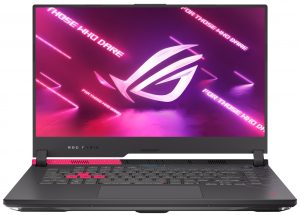
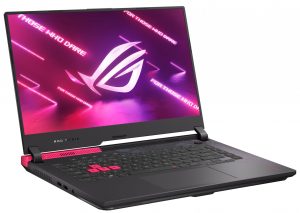

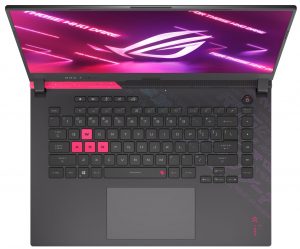
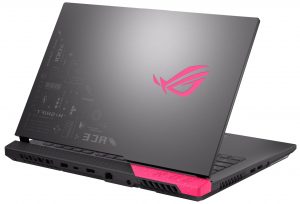
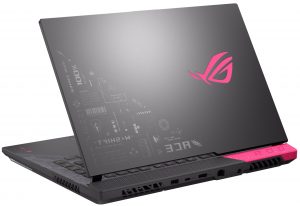
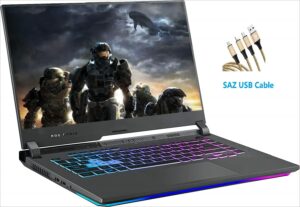
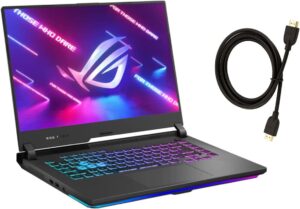
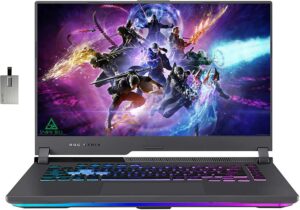
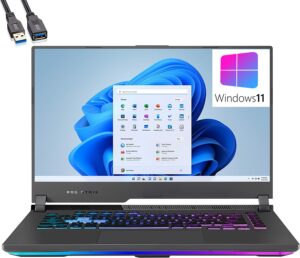

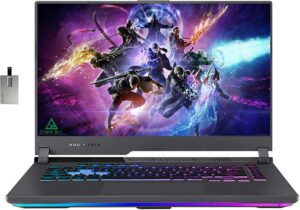

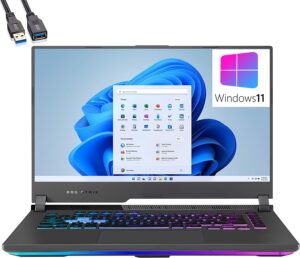
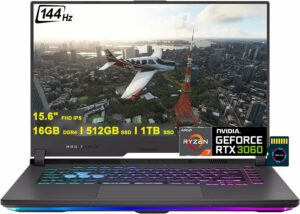

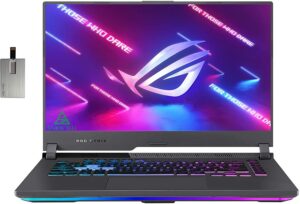



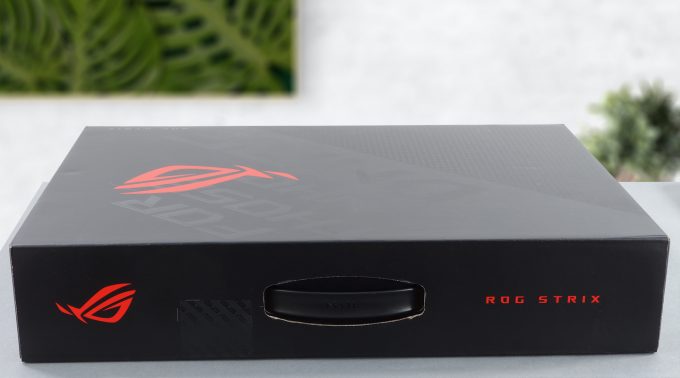

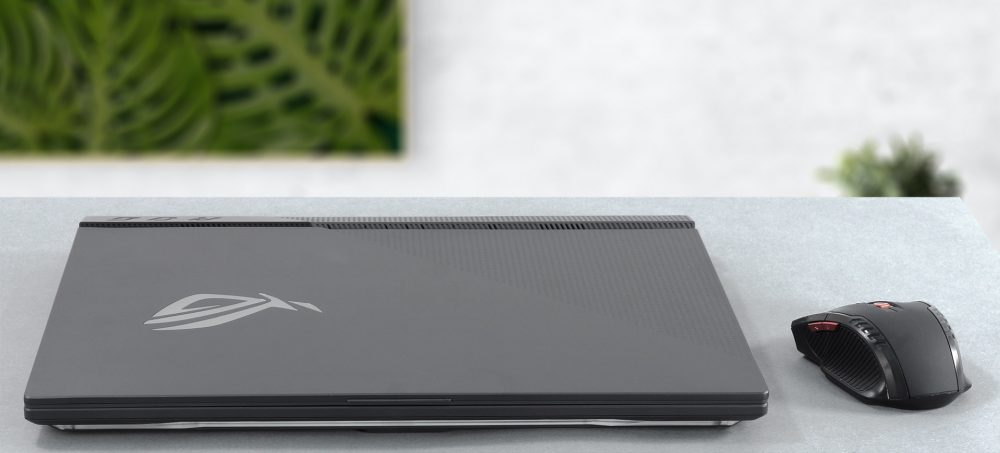
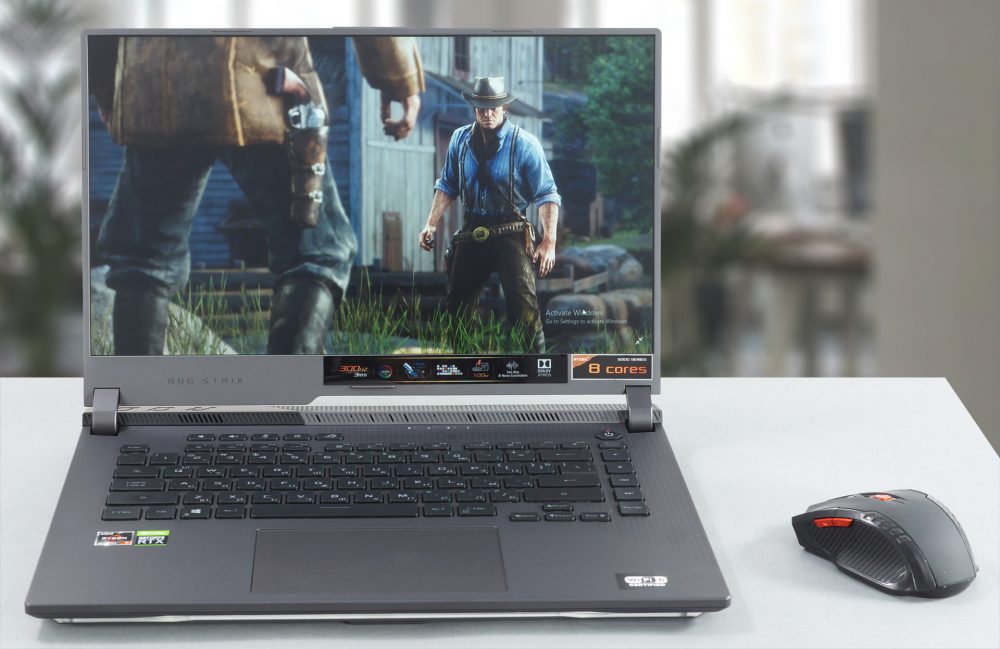
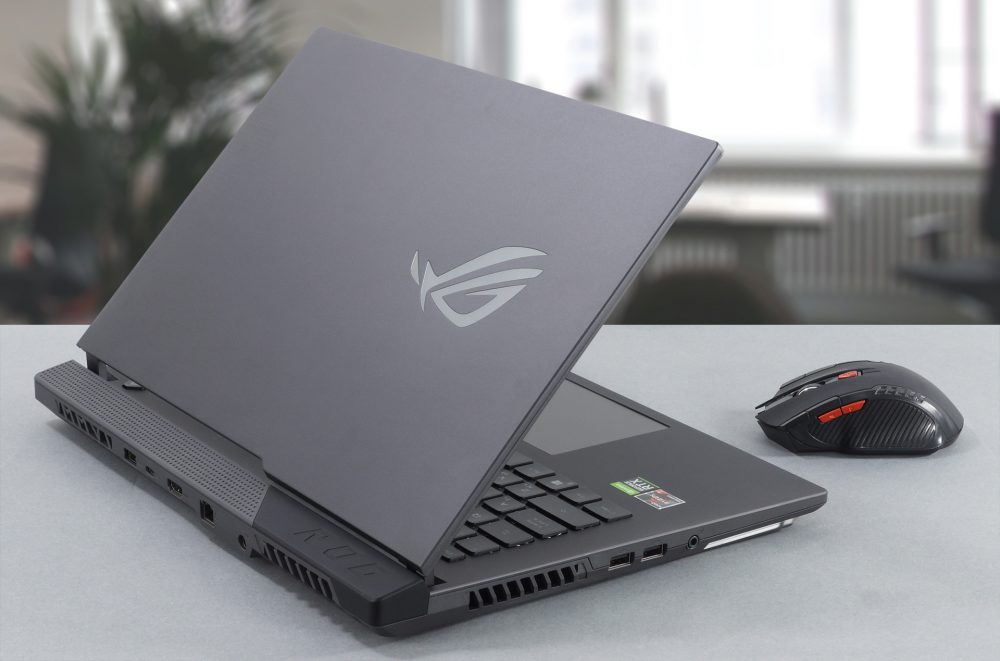
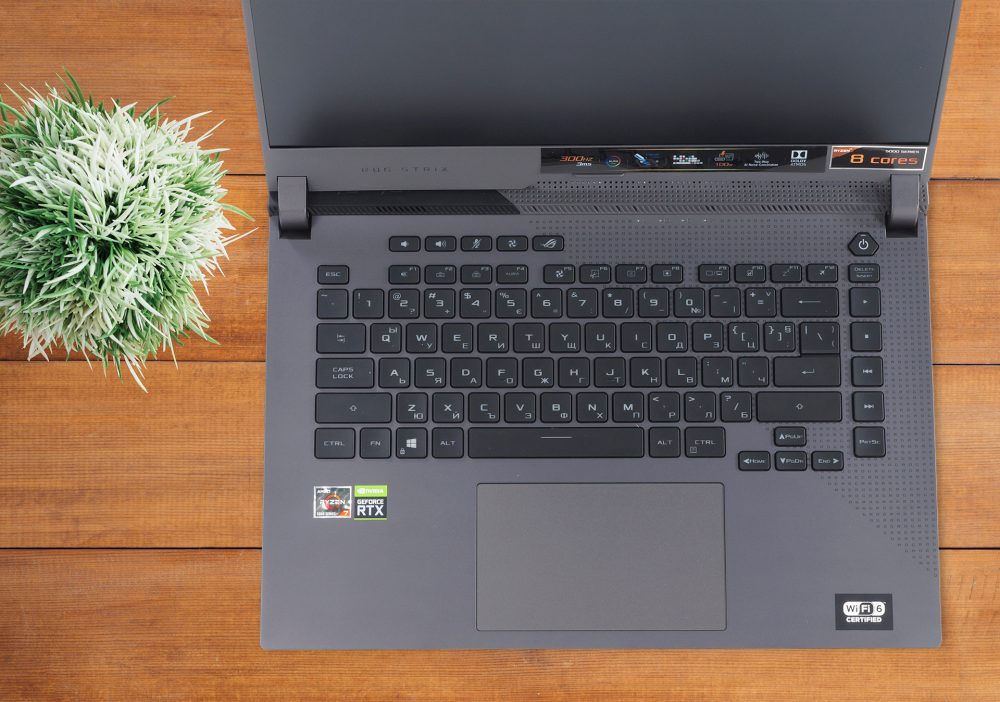
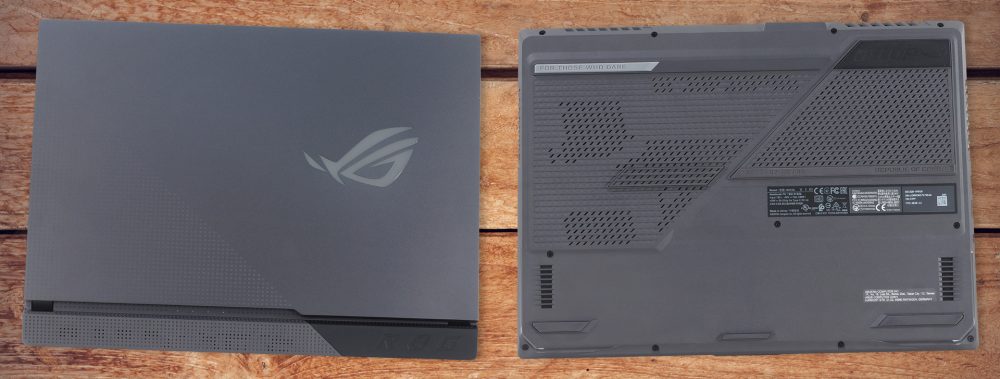




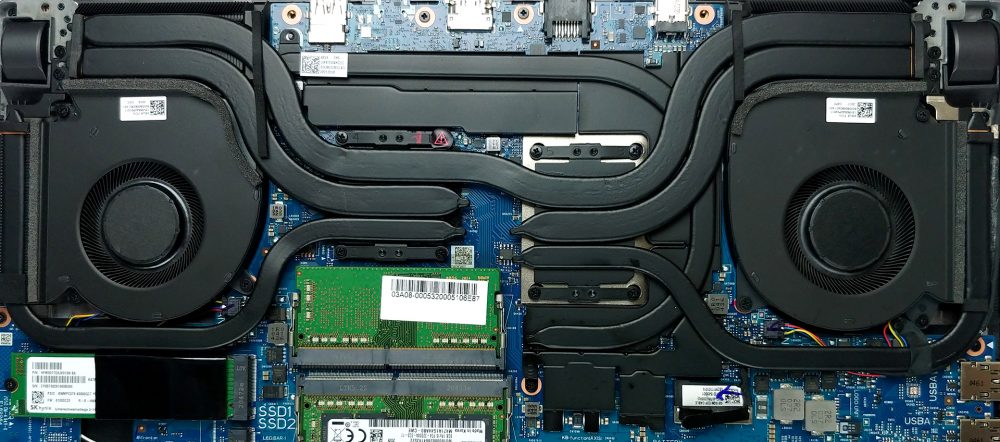
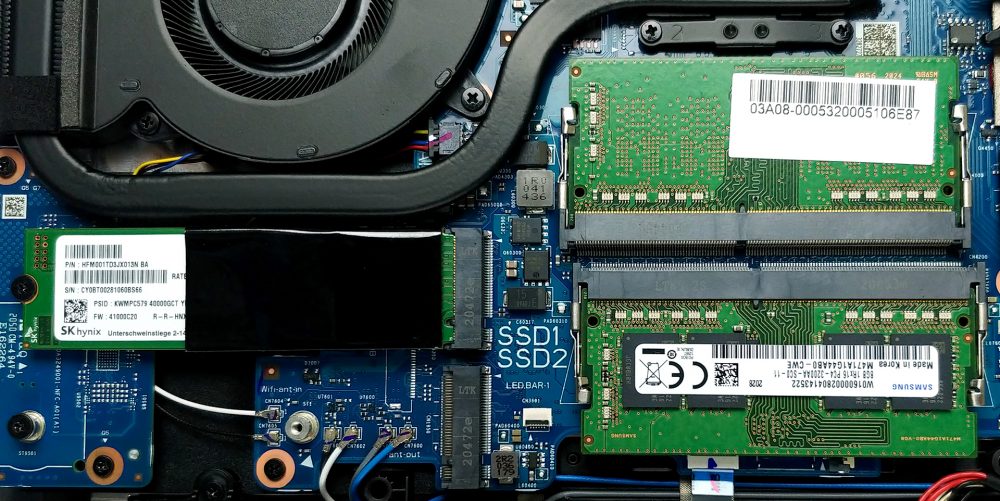

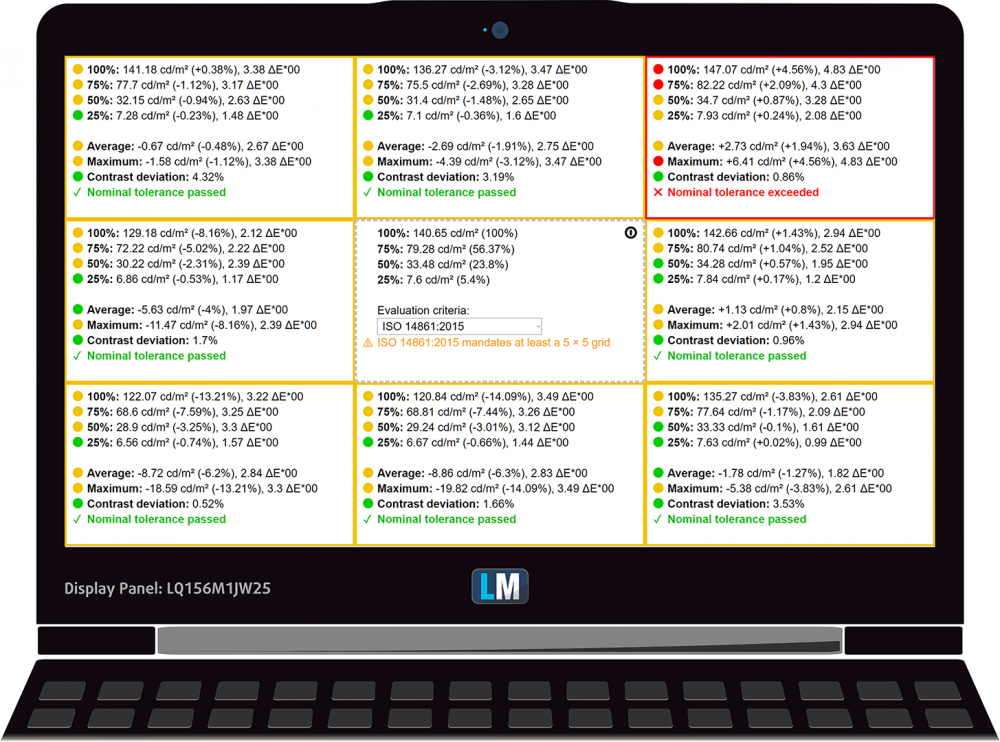
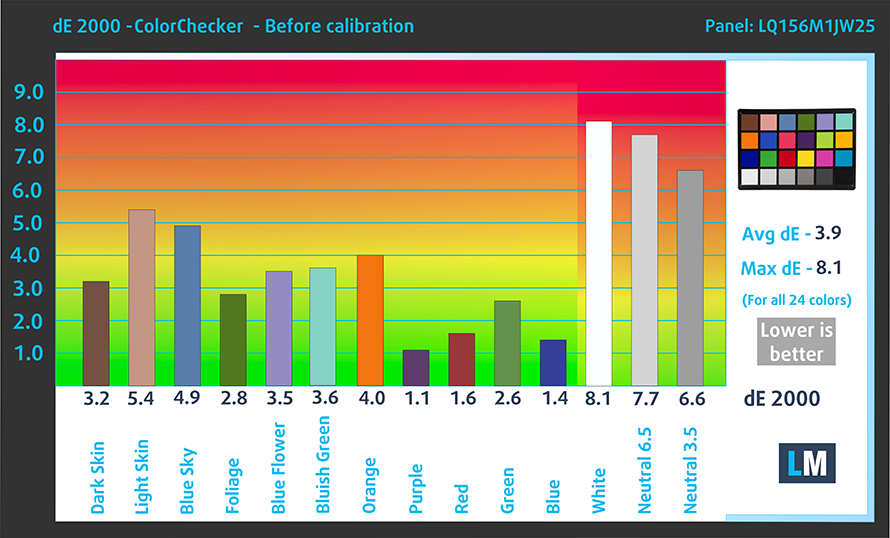
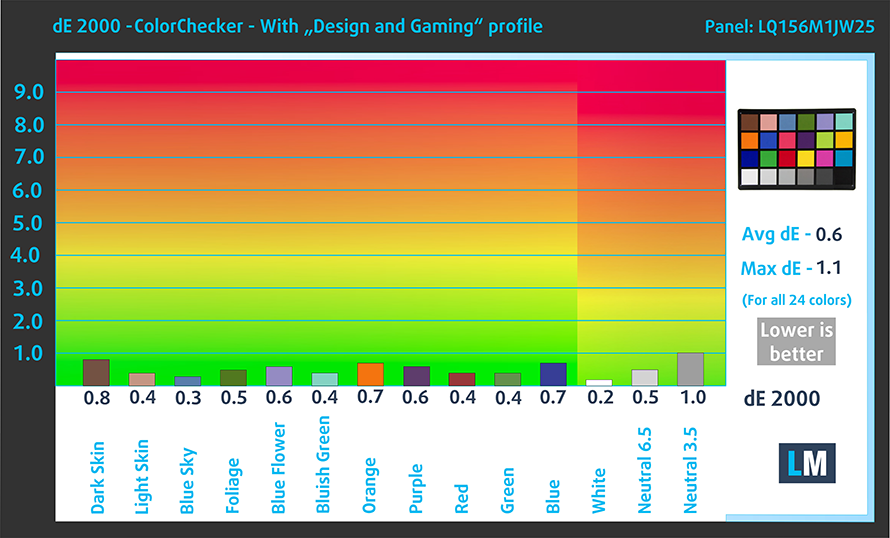

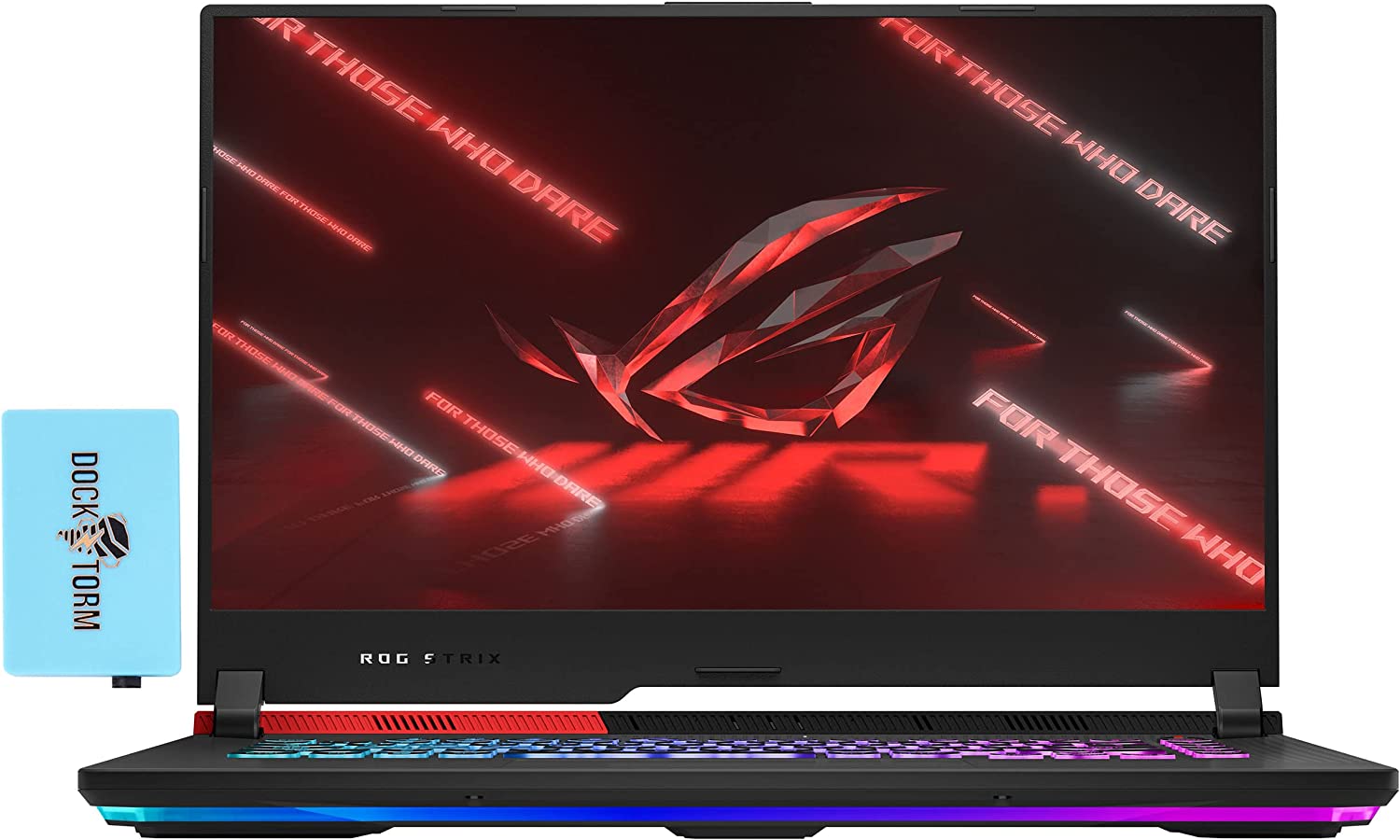
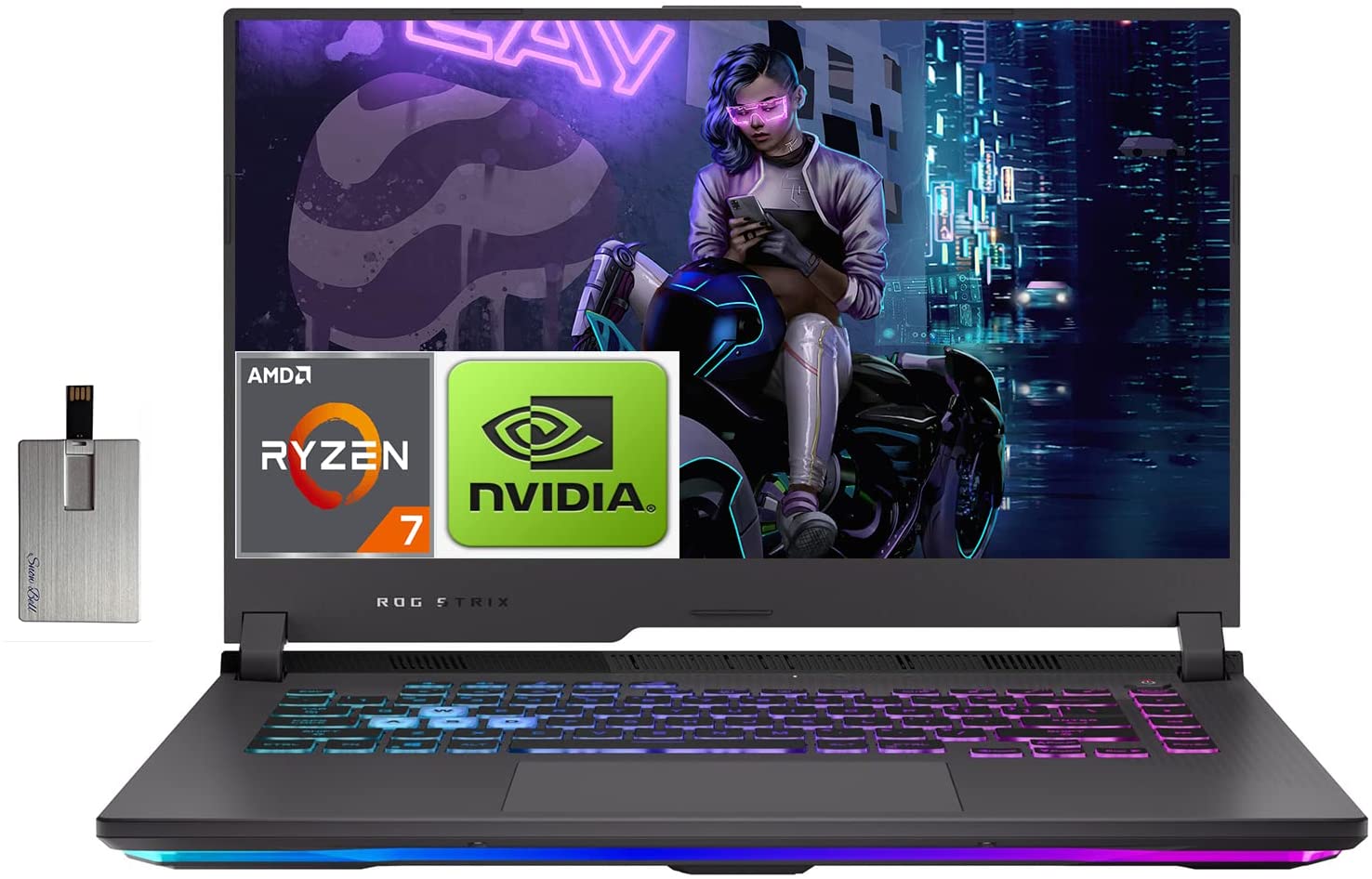
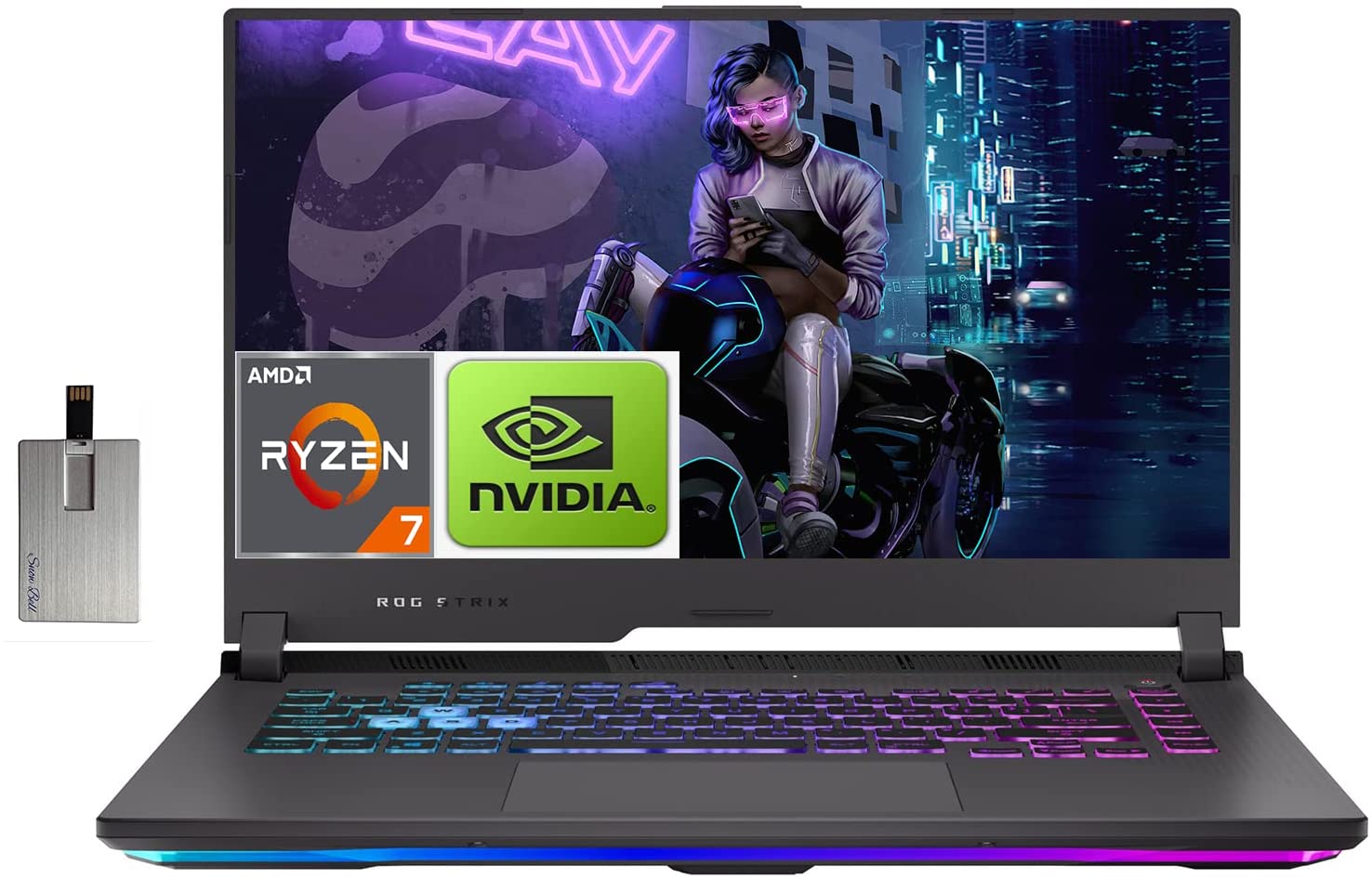







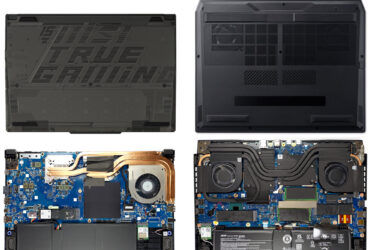
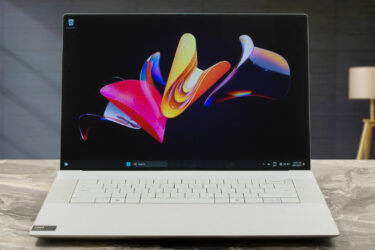
I miss blacklevel measurement.
Hello
I bought this exactly Notebook one year ago. Now, I wish to make an upgrade. Would you please help me to know if the SSD PCIe slot is gen 3 or 4.
logic its 4gen because you have 5th gen ryzen